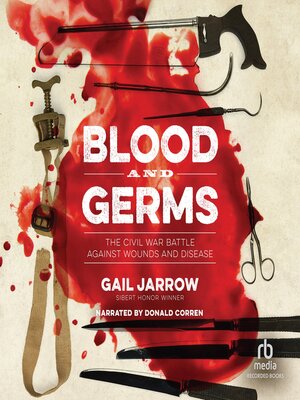Blood and Germs
audiobook (Unabridged) ∣ The Civil War Battle Against Wounds and Disease · Medical Fiascoes
By Gail Jarrow

Sign up to save your library
With an OverDrive account, you can save your favorite libraries for at-a-glance information about availability. Find out more about OverDrive accounts.
Find this title in Libby, the library reading app by OverDrive.



Search for a digital library with this title
Title found at these libraries:
| Library Name | Distance |
|---|---|
| Loading... |
Acclaimed nonfiction writer and Sibert Honor winner Gail Jarrow begins her new series on medical fiascoes with an in-depth look at the bloodiest conflict in U.S. history. The Civil War took the lives of more than 600,000 men. Bullet wounds
were deadly, but twice as many soldiers died from disease—pneumonia, diarrhea, typhoid fever, measles, and smallpox. Tens of thousands who survived the war were permanently disabled or disfigured. Yet out of this tragedy came medical
progress. Doctors and nurses gained valuable experience treating the injured and sick. Military and medical officials recognized that proper sanitation in camps and hospitals could save lives. Improvements to the ambulance service and hospital
system lowered the fatality rate. An expert at blending science and history, Jarrow relies heavily on primary documents—first-person accounts and medical case studies—to reveal the true stories behind the battle against wounds and disease.
were deadly, but twice as many soldiers died from disease—pneumonia, diarrhea, typhoid fever, measles, and smallpox. Tens of thousands who survived the war were permanently disabled or disfigured. Yet out of this tragedy came medical
progress. Doctors and nurses gained valuable experience treating the injured and sick. Military and medical officials recognized that proper sanitation in camps and hospitals could save lives. Improvements to the ambulance service and hospital
system lowered the fatality rate. An expert at blending science and history, Jarrow relies heavily on primary documents—first-person accounts and medical case studies—to reveal the true stories behind the battle against wounds and disease.







